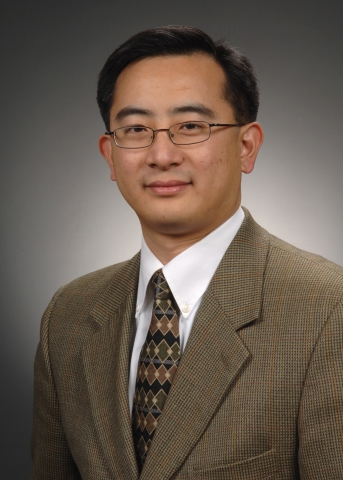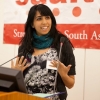May252016
Posted at 1:57 PM
Ed. note: This post is part of the Spotlight on Commerce series highlighting members of the Department of Commerce and their contributions to the Open for Business Agenda
I’m the native-born son of immigrants from Taiwan who came to the United States as graduate students to pursue opportunities for a better life. Growing up in New Jersey, I was encouraged to embrace science and engineering from an early age, not only in school, but also through numerous trips to the natural history museum and support for hobbies like building model rockets. As I began to focus professionally on chemical engineering through my undergraduate and graduate studies, I was drawn to the excitement of discovery and the joy of solving tough problems that drives many of us engaged in scientific research.
Growing up in Houston, TX, I had very little understanding about what a career in scientific research could look like. Even though my mother is a community college chemistry instructor and my father worked as a Ph. D. chemical engineer within the oil industry, I could not have imagined that a place like NIST existed. Here, groundbreaking science happens every day. NIST focuses on metrology, the science of measurement. And that means that our work is central to both improving the practice of science by ensuring experiments are reproducible and it’s also essential to improving the practice of industry by ensuring quality and integration of manufacturing. Taken together, it means NIST has a large impact on a wide range of U.S. challenges.
Today, I serve as Chief of the Materials Science and Engineering Division within NIST’s Material Measurement Laboratory. My division’s research helps industry develop and deploy advanced materials such as new, high-strength metal alloys, organic polymers for flexible electronics, and carbon nanotubes with controlled properties. These materials reflect amazing technologies being developed today. Our work is built upon a strong 100+ year NIST tradition of materials science firsts – things like the discovery of quasicrystals (2011 Nobel Prize), polymer crystallization, and the development of the theory of precipitation hardening of metal alloys.
Early in my career, I worked with researchers from IBM, Intel, and other manufacturers within SEMATECH, an industry consortium. We used the unique capabilities of the NIST Center for Neutron Research (NCNR) and the National Synchrotron Light Source (NSLS) to learn detailed insights about how polymer materials perform at the molecular scale, knowledge that helped inform the incredible manufacturing capabilities of today’s atomic-scale electronics industry.
More recently, the importance of advanced manufacturing and “big data” approaches have led to exciting new areas that are transforming the U.S. industrial landscape. For example, additive manufacturing or “3D printing” can produce highly-complex components ranging from fuel nozzles for jet engines to custom-fit medical devices to flexible electronics. The promise is immense, but so are the challenges. Improved models are needed to ensure that the materials used to build such products will have the structure, properties, and stability to function reliably.
Another exciting area is the Materials Genome Initiative. This national program is about seamlessly integrating experiment, computational modeling, theory, and data. We want to discover, manufacture, and deploy advanced materials twice as fast, at a fraction of the cost. To do so requires a paradigm shift from the largely trial-and-error development cycle or very focused, detailed scientific work that has dominated materials development until now. Our staff are working hard with partners across industry, government, and academia to provide tools such as a data curation system and computational software that will help achieve this goal.
Over the years, as the pace of research progress accelerates, there is a constant factor that has enabled NIST to remain at the forefront of these changes. The NIST staff is incredibly dedicated and knowledgeable. But, it is the sense of shared purpose that really makes the difference. Outstanding mentors like Pablo Debenedetti, Alice Gast, and Wen-li Wu, have taught me and others that passion, hard work, and scientific expertise are not enough. It’s also important to learn from others, working well with a team, and strive together to make a difference. I do my best to sustain this positive working environment each day, to foster the development of each and every one of my colleagues.
While I was growing up, I was generally aware of Asian Pacific American Heritage Month. I enjoyed the attention focused on recognizing the breadth of experiences in the Asian American community and celebrating many different cultural elements including arts, dance, and food.
My parents were part of a new wave of immigration from Asia (and other non-European countries) that arose from the Immigration and Naturalization Act of 1965. They bravely moved to a new country where they did not have any family and did not speak the language. They built a life in the United States, adopting a love of local culture like Texas BBQ and pro basketball. At the same time, they built a community with other immigrants through activities like Chinese New Year celebrations and Chinese language schools.
It’s amazing to me that I lead world class scientists at a place like NIST, while, just a few generations ago, my maternal grandmother lived in the rural countryside and was illiterate. My parents came to the U.S. to build a better life. Building upon their vision and hard work, I am grateful to be working at NIST with the same mission.




